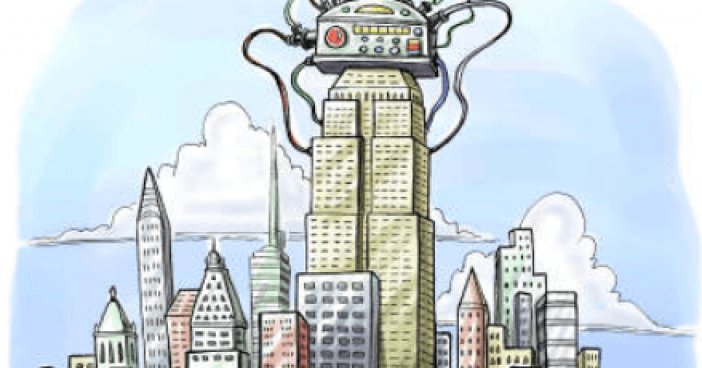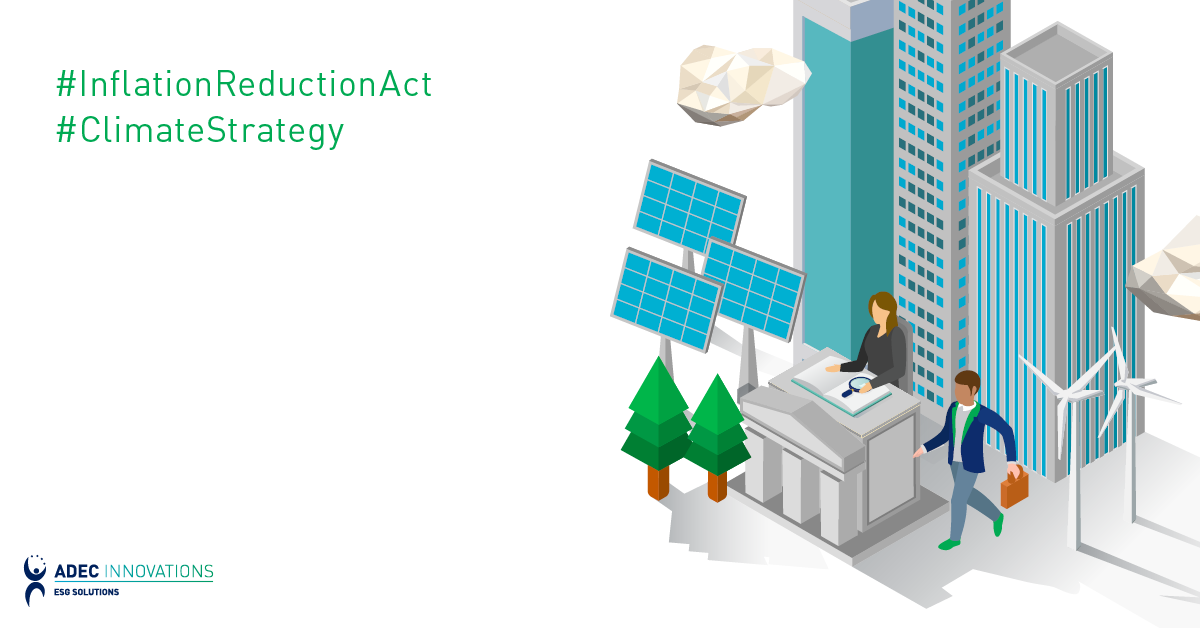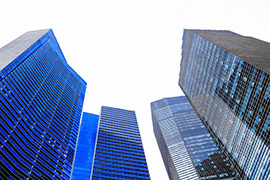 In previous blogs I discussed the challenges of carbon reduction through less energy use in our buildings. As such, business owners need to recognize that in addition to being green and reducing energy use, they can produce energy on-site and connect to a Smart Grid, among many other things. Buildings that go beyond reducing energy use and pursue new objectives, such as producing energy on-site (e.g. via solar panels) and connecting to a Smart Grid, is just one of the many ways in which a building transforms from being merely green to being intelligent. The Continental Automated Buildings Association (CABA), a non-profit industry association dedicated to the advancement of intelligent home and building technology, recently released their Frost & Sullivan research study titled, “Intelligent Buildings and the Bid-Specification Process”. I will be summarizing this study in two parts: the previous blog discussed the problem, while this one provides further information on the challenges as well as a few suggested solutions.
In previous blogs I discussed the challenges of carbon reduction through less energy use in our buildings. As such, business owners need to recognize that in addition to being green and reducing energy use, they can produce energy on-site and connect to a Smart Grid, among many other things. Buildings that go beyond reducing energy use and pursue new objectives, such as producing energy on-site (e.g. via solar panels) and connecting to a Smart Grid, is just one of the many ways in which a building transforms from being merely green to being intelligent. The Continental Automated Buildings Association (CABA), a non-profit industry association dedicated to the advancement of intelligent home and building technology, recently released their Frost & Sullivan research study titled, “Intelligent Buildings and the Bid-Specification Process”. I will be summarizing this study in two parts: the previous blog discussed the problem, while this one provides further information on the challenges as well as a few suggested solutions.
Intelligent Buildings vs. Green Buildings
The intelligent buildings industry in North America is still in the early adoption stage, as most of the recent focus has been on green buildings, although they are not necessarily intelligent. In this day and age we have smartphones, TVs and other tech savvy devices; however, we still have many “dumb” buildings. Green building councils and business owners alike now realize that genuinely sustainable buildings require more than a plaque on the door after meeting a rating level. The buildings must operate properly with integrated and collaborative systems that provide the occupants with the highest quality results at the lowest life cycle costs. Recent studies have shown that simply having a green rating does not guarantee that the green rating model helps set specific targets for energy.
Intelligent Building Megatrends
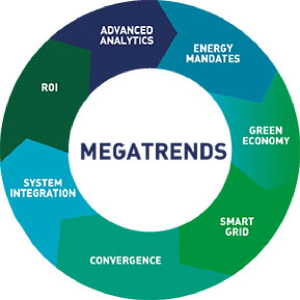
The Megatrends for intelligent buildings, as noted above, not only include the green economy, renewables and clean energy mandates as reflected by most green ratings, but they also include a fair rate of return on investement, advanced analytics, system integration, convergence, and Smart Grid use. Attaining green ratings may not suffice anymore as they cannot provide guidelines for constructing sustainable buildings as comprehensively.
A building’s intelligence is based on the information it acquires from its building systems with microprocessors and data exchange capabilities. Illustrating how the interaction of intelligent building Megatrends comprehensively address sustainability is this practical example (see chart above, to the right). Intelligent buildings come with Smart Grids to automate energy use management; System integration can allow the security system to say the number of occupants to the HVAC (Heating, Ventilation, and Air Conditiong) system to determine cooling load information. Using this information, in addition to the outside temperature and current electricity price, allow for advanced analytics (with the help of a Smart Grid) which will in turn optimize energy efficiency while meeting the cooling load. The savings from efficient energy use is part of gaining a large ROI. Convergence is the requirement that we break out of the traditional silos and look for the synergies and benefits of the information exchange. This provides the convergence opportunities for better integration and interoperability of our building automation systems.
Why it’s Smart to Install Smart Grids
The Smart Grid is already being improved to allow for more renewables to be used in our buildings, and to have buildings provide demand response curtailment when the sun doesn’t shine or the wind stops blowing. Future transactive energy opportunities for intelligent buildings are noted on the chart below.
Chart taken from a slide presented by Paul De Marti of the Caltech Resnick Sustainability Institute at the May 2013 Gridwise Council Transactive Energy conference.
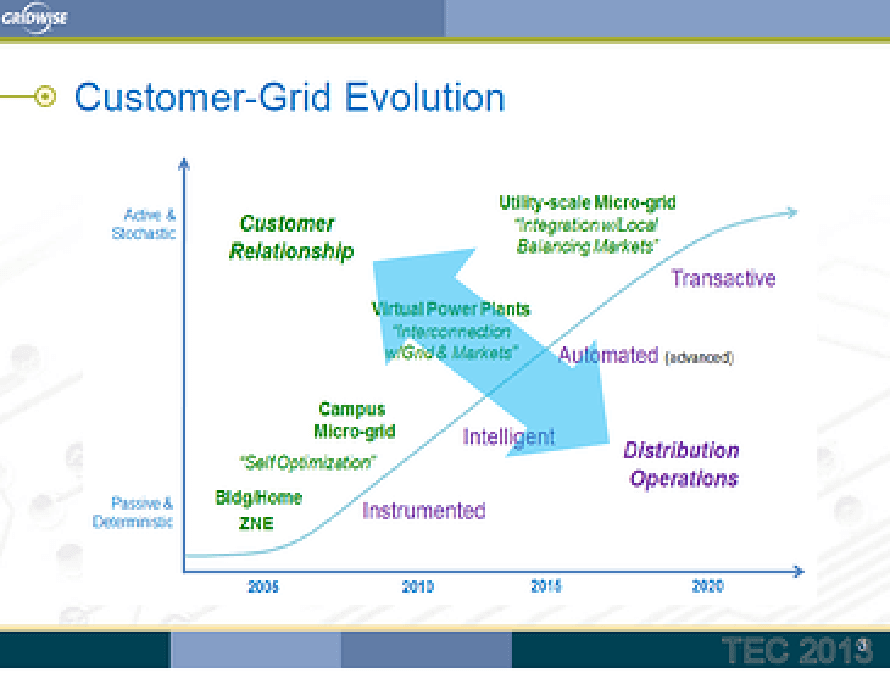
In addition to improving the operations and lowering costs, an intelligent building system can provide the data needed for completing the reports on greenhouse gas (GHG) emissions required with carbon taxation proposals or legislation coming in many jurisdictions.
Intelligent Buildings and the Bid Spec Process
There are distinct dynamics that have driven and challenged the use of intelligent technologies. The chart below depicts the key industry dynamics of the intelligent buildings industry.
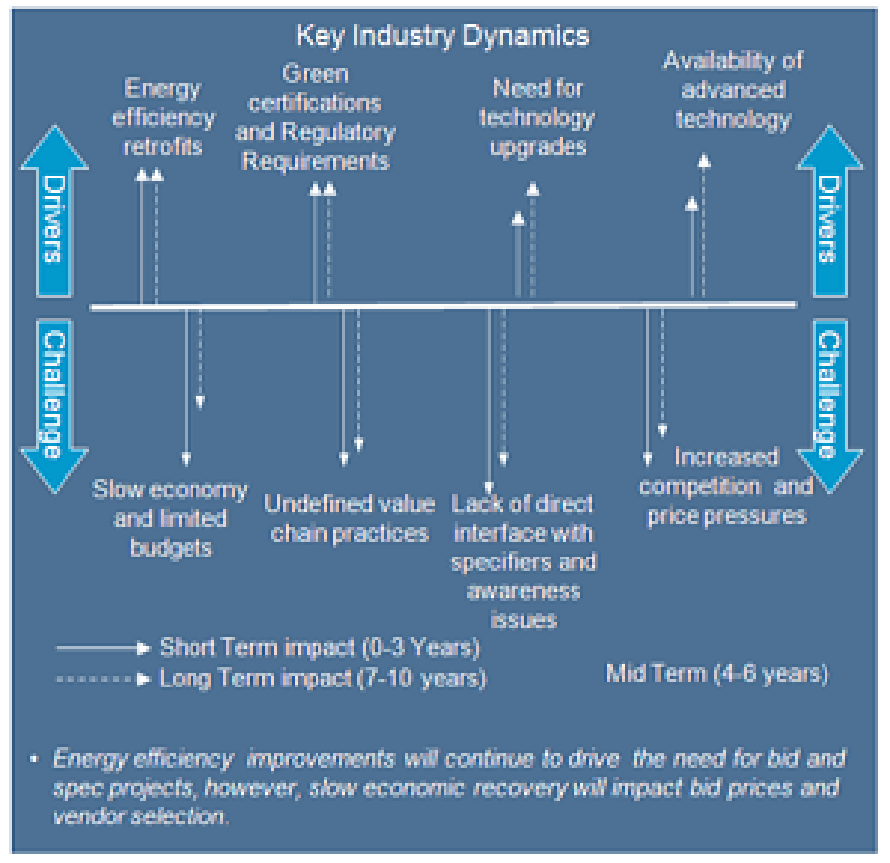
Chart taken from Intelligent Buildings and the Bid Specification Process 2012 Landmark Research Study Executive Summary.
The bid spec process is a practical example in which the interaction of the factors in this chart can be seen. Frost & Sullivan’s research indicates that the traditional engineering and capital procurement system is being used for implementing intelligent building systems. The suppliers are requested to bid after a specification has been written defining the building automation system and the open protocol standards. This is done to allow more than one supplier to be qualified and invited to bid competitively. The bid spec process has thrived due to the demand for technology and service solutions prompted by unique end-user needs, in addition to the building owners’ and operators’ perception of the cost-efficiency that intelligent buildings provide. However, research indicates that the end results obtained through pursuing the bid spec process does not often mirror the original project vision; particularly when it comes to procuring the most optimal technology or service solution.
Constructing more Intelligent Buildings:
- Intelligent building owners consider technology integration to be essential; nevertheless, investment and the perceived value derived are not well aligned. A common issue among owners and operators is their lack of product knowledge. To address this deficiency in technology and service solutions knowledge, the industry has to help the academe develop the curricula. This will allow the next generation of tech savvy engineering and architecture students to learn what an intelligent building automations system should include and how it can perform cost-effectively.
- The perceived price-performance ratio of these products is further impacted by the demand potential for intelligent buildings solutions. Building owners do not have a clear picture of the concrete benefits of buying these products and solutions. Building owners and operators must request bidders to submit proposals which outline life cycles and benefits. Additionally, knowledge of the utility incentives for upgrading building automation systems (i.e. if they save energy) and whether they offer continuous commissioning should also be requested of service providers.
- Present bid and spec processes are followed in the industry, however they lack transparency, are price driven, and do not offer adequate impetus to the incorporation of intelligent technologies. If the building is going to be sold or operated with others incurring the energy and operating costs, then the builders have little incentive to purchase more intelligent systems since the purchaser may have a different capital versus operating cost perspective.
- The issue lies in the fact that technology suppliers do not have a good grasp of spec practices, and likewise, spec providers lack a thorough understanding of technology advancements. Designers and engineers tend to be risk-averse so they simply specify what they previously purchased to avoid being the test case or pilot project.
- The most essential need for industry participants is to organize initiatives to work together and to create structural frameworks for joint collaboration in the development of building technology and spec development practices. Collaboration efforts by CABA continue with the next project being the application of Life Cycle Costs for Intelligent Buildings. This will be similar to the efforts for integrated project design approach and life cycle costing for Green and High Performance Buildings.
Information on the Bid and Spec research courtesy of CABA and Frost & Sullivan.
At FirstCarbon Solutions we have the energy management and building automation experts that can help building owners address these challenges. Our team will provide you with the capabilities to make your building more intelligent and to interoperate with the future Smart Grid. To learn more contact us:

